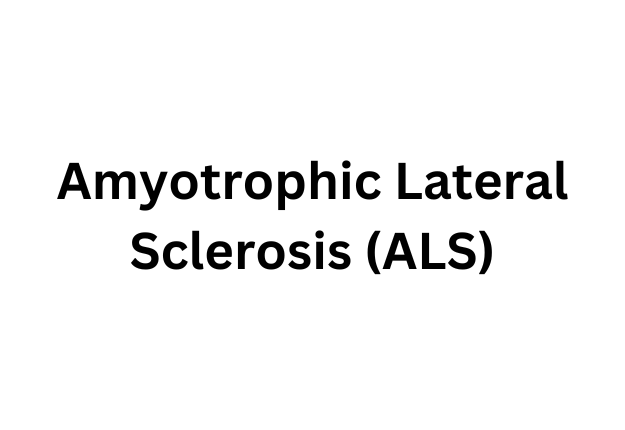Amyotrophic lateral sclerosis (ALS) is a disorder of a wider group of disorders known as motor neuron diseases.
ALS is a degenerative disease in which the nerve cells that control voluntary muscle movement, including chewing, walking and talking, are affected. The disease currently has no cure and symptoms worsen over time.
People who develop ALS are often between the ages of 40 and 70; however, the disease can happen to an individual at an earlier age. It is a disease that occurs across the world and possesses no socioeconomic, racial or ethnic boundaries.
It has been reported to affect 30,000 individuals in the U.S with 5,000 new cases identified each year.
Pathophysiology
ALS arises from a progressive degeneration and death of motor neurons, also known as nerve cells. These nerve cells are crucial as they connect the brain to the spinal cord and to the muscles in the body, and this communication facilitated by the nerve cells is what allows voluntary movement.
Messages from nerve cells in the brain, called upper motor neurons, are carried to nerve cells in the spinal cord, called lower motor neurons. These messages are then passed on to nerve cells in various muscles.
In ALS, both the upper and lower motor neurons deteriorate and die and lose their ability to carry messages from the brain to the muscles in the body. This impairs muscle function, causing muscles to weaken, twitch, and waste away. Eventually, the brain completely loses its ability to control voluntary movements.
What causes ALS remains unknown, however, some scientific studies have demonstrated that genetics and environment may give rise to the development of ALS.
Symptoms
Some of the early symptoms of ALS include:
- muscle twitches in the arm, leg, shoulder, or tongue
- muscle cramps
- tight and stiff muscles
- muscle weakness affecting an arm, a leg, neck or lungs
- slurred and nasal speech
- difficulty chewing or swallowing
For some individuals, the symptoms may first appear in their hand. They may experience difficulty when trying to perform easy tasks including buttoning a shirt, writing or turning a key in a lock.
Others might experience symptoms in one leg such as difficulty walking or running as they often stumble or trip. If symptoms begin in the limbs then it is referred to as “limb onset”.
Others may first experience symptoms such as problems with speech and swallowing, this is referred to as “bulbar onset”.
However the symptoms may first appear, in all individuals, the disease progresses and muscle weakness and wasting spread to the rest of the body.
Eventually, patients with ALS develop problems with moving, swallowing, talking and breathing. As individuals with ALS experience difficulty with chewing and swallowing it is hard for them to eat, this can increase their risk of choking. ALS patients also burn calories faster than a person without ALS and thus lose weight quickly and can become malnourished.
ALS patients retain their higher mental processes such as reasoning, remembering and understanding. Therefore, they are fully aware of the progressive loss of function within their body. This can lead many to become anxious and depressed.
As the muscles involved in breathing weaken over time, individuals with ALS eventually lose the ability to breathe independently and require a ventilator. This also increases their risk of pneumonia. Patients may also experience cramps and others may experience painful nerve disease or damage.
Diagnosis
There is not a single definitive test to diagnose ALS. Instead, physicians will document the individual’s signs and symptoms during a physical examination and then carry out a number of tests to rule out any other possible diseases with ASL-like symptoms such as HIV and human T-cell leukemia virus. An individual with upper and lower motor neuron symptoms suggests that they have the disease.
Treatments and Management
Due to the fact that there is no cure for ALS, treatments provided by multidisciplinary teams are currently supportive. This means that the care provided for ALS aims to control symptoms, decrease risks, and help improve the patient’s quality of life. Multi-disciplinary teams work together to treat a patient with ALS. This team consists of: physicians; pharmacists; physical, occupational, and speech therapists; nutritionists; social workers; respiratory therapists and clinical psychologists; and home care and hospice nurses. These health professionals will work together to formulate a treatment plan and provide equipment to meet the specific needs of a patient with ALS.
Below are the latest recommendations from the American Academy of Neurology for the management of ALS.
- Offer riluzole to all ALS patients. Riluzole is used to decrease the damage to the nerve cells but it cannot reverse any of the damage. There is also a second drug approved by the FDA called edaravone. Clinical trials regarding edaravone have demonstrated that it can slow down the decrease in daily functioning in patients with ALS.
- Feed patients through a PEG to maintain the patient’s body weight and nutritional status.
- Employ non-invasive ventilation for patients who are unable to breathe sufficiently in order to prolong survival.
- Use mechanical insufflation/exsufflation, which is a device used to clear mucus from a patient’s airway.
- Consider invasive ventilator support if a patient presents with respiratory failure but is mentally fine.
- Consider muscle relaxants to those with spasticity.
- Consider the use of certain medications classified as anticholinergics and sympathomimetics for hypersalivation. Consider the use of mucolytics for thick secretions.
- Consider lorazepam for anxiety.
- Consider the use of selective serotonin reuptake inhibitors (SSRIs) for depression.
- Consider NSAIDS, tramadol, ketorolac, morphine, or transdermal fentanyl to manage pain.
References:
- Armon, C. 2018. Amyotrophic Lateral Sclerosis. [Online]. [28 August 2018]. Available from: https://emedicine.medscape.com/article/1170097-overview
- National institute of neurological disorders and stroke. 2018. Amyotrophic Lateral Sclerosis (ALS) Factsheet . [Online]. [28 August 2018]. Available from: https://www.ninds.nih.gov/Disorders/Patient-Caregiver-Education/Fact-Sheets/Amyotrophic-Lateral-Sclerosis-ALS-Fact-Sheet
- John hopkinsmedicine . ALS – Amyotrophic Lateral Sclerosis . [Online]. [28 August 2018]. Available from: https://www.hopkinsmedicine.org/neurology_neurosurgery/centers_clinics/als/conditions/als_amyotrophic_lateral_sclerosis.html



